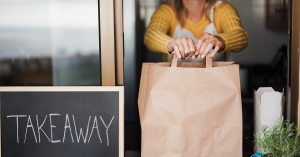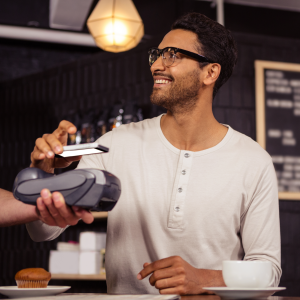Estimated reading time: 4 minutes
There’s no knowing when the Pandemic will vanish for good; it’s likely this virus will be around for a while and given that understanding restaurants and retail shops will likely always have some guidelines put in place to ensure that their customers and employees are always protected and cared for going forward. Over the past 18 months, governing bodies and restaurant owners have worked hand-in-hand to allow the purchase of carry-out cocktails and more liberally monitored outdoor dining experiences. All of these allowances and modifications have been possible due to the help of advanced technology installations such as contactless strategies to keep people distanced from each other, while also still having the best interaction possible, easier for both parties involved. As the rest of 2021 ends and 2022 offers new potential, it will be interesting to take a deeper dive into what restaurants will look like in the future of hospitality integrations.
Ghosts & Goblins, Oh My
 The first day of Autumn has come and past and many of the surrounding areas have begun to feel a chill, not just in the air, but also in their restaurant spaces, through the form of Ghost Kitchens. A haunted kitchen? No, not necessarily, for a ghost kitchen in its actual term allows hospitality groups to operate on a digital only work frame. Many independent restauranteurs who don’t have a physical location thrive off of this ideology because it removes the need for that physical shop and they can continue operating their business from their home kitchen and just have a pickup spot for delivery drivers to transfer the order, if necessary.
The first day of Autumn has come and past and many of the surrounding areas have begun to feel a chill, not just in the air, but also in their restaurant spaces, through the form of Ghost Kitchens. A haunted kitchen? No, not necessarily, for a ghost kitchen in its actual term allows hospitality groups to operate on a digital only work frame. Many independent restauranteurs who don’t have a physical location thrive off of this ideology because it removes the need for that physical shop and they can continue operating their business from their home kitchen and just have a pickup spot for delivery drivers to transfer the order, if necessary.
In some trends, many restaurants are binding together to operate ‘commissary-style’ as ghost kitchens to work out of the same space. This way they can utilize the same equipment pieces and will often host pop-ups for the smaller organizations to get their couple days of spotlight for their customer base, increasing their reach as well.
Read More on the TEConnect Portal: How QSRs Are Reinventing Their Delivery Methods
According to Hudson Riehle, Senior Vice President of the Research and Knowledge Group for the National Restaurant Association, takeout, curbside pickup, and delivery accounted for 60% of all restaurant traffic before the pandemic, but increased to 90% during the second quarter of last year. This will likely stay like this for a while, seeing as we don’t necessarily know what the future of the pandemic will bring, and being overly cautious about employee and customer safety isn’t the worst thing to be promoting.
Streamlining into 2022
One of the bigger hypes of the year has been diving into how to integrate cloud-oriented tactics into the food and beverage spectrum and how to incorporate that into the contactless technology strategies that are already being put into place here. Restaurant cloud-based options are growing in popularity because they’re so convenient for managers to access.  Cloud-based solutions can help restauranteurs master their inventory control processes, without needing any additional hardware or software services to do the job. Managers can remotely access inventory and stock numbers from virtually anywhere in the store, or from a different location entirely, keeping up with social distancing measure as well.
Cloud-based solutions can help restauranteurs master their inventory control processes, without needing any additional hardware or software services to do the job. Managers can remotely access inventory and stock numbers from virtually anywhere in the store, or from a different location entirely, keeping up with social distancing measure as well.
Menus and hours of operation can also be altered though an easier step-by-step process. Coming back around again, full circle, most cloud-based solutions that offer POS offerings also provide a contactless feature. Mobile and contactless payment solutions can help customers to make payments, complete transactions, and leave tips without the waiter/waitress having to run back and forth between registers and tables.
An additional advance that gained popularity this past year, due to the COVID-19 virus, and continues to make appearances in quick service restaurants everywhere is the usage of self-service kiosks to provide dining experiences. Before the pandemic, self-ordering technology was gaining traction but was nowhere near as popular as it is now. With locations suffer to fill human positions due to the labor shortage, self-service kiosks can come in when managers are in need the most. Ordering, completing the transaction and receiving confirmation of the purchase via a receipt can all be administered through a self-service device or station to help cut back on long waits in the queue line and even free up QSR workers for other tasks around the shop.
Read More on the TEConnect Portal: The State of Self-Service Kiosks
Very recently the TEConnect Podcast crew caught up with Epson’s Josh Stanphill and David Vander Dussen to talk more on just where they place their predictions for the future of hospitality technology to go as the years keep moving towards us.  There’s a lot of value in future-proofing restaurants and other entertainment environments when it comes to VARs selling solutions to their customers to keep them informed of the likely change to come, and how they can adapt whether it’s through contactless integrations or interactions that seem to be a bit more hands-on. There’s a lot of benefit from this episode, and it’d be worth your time to head over to our YouTube page or wherever you listen to your podcasts to go check it out!
There’s a lot of value in future-proofing restaurants and other entertainment environments when it comes to VARs selling solutions to their customers to keep them informed of the likely change to come, and how they can adapt whether it’s through contactless integrations or interactions that seem to be a bit more hands-on. There’s a lot of benefit from this episode, and it’d be worth your time to head over to our YouTube page or wherever you listen to your podcasts to go check it out!

